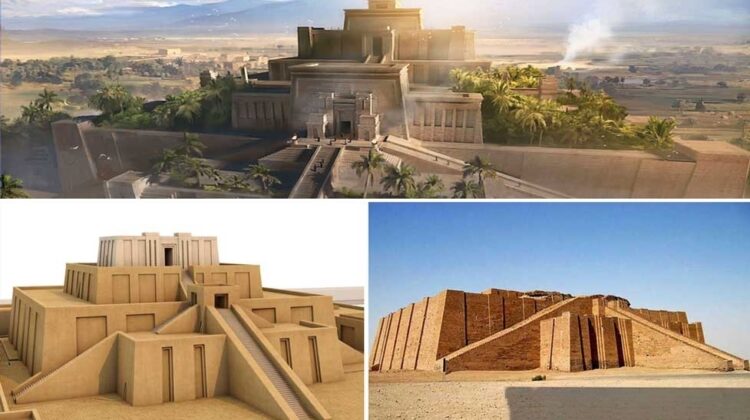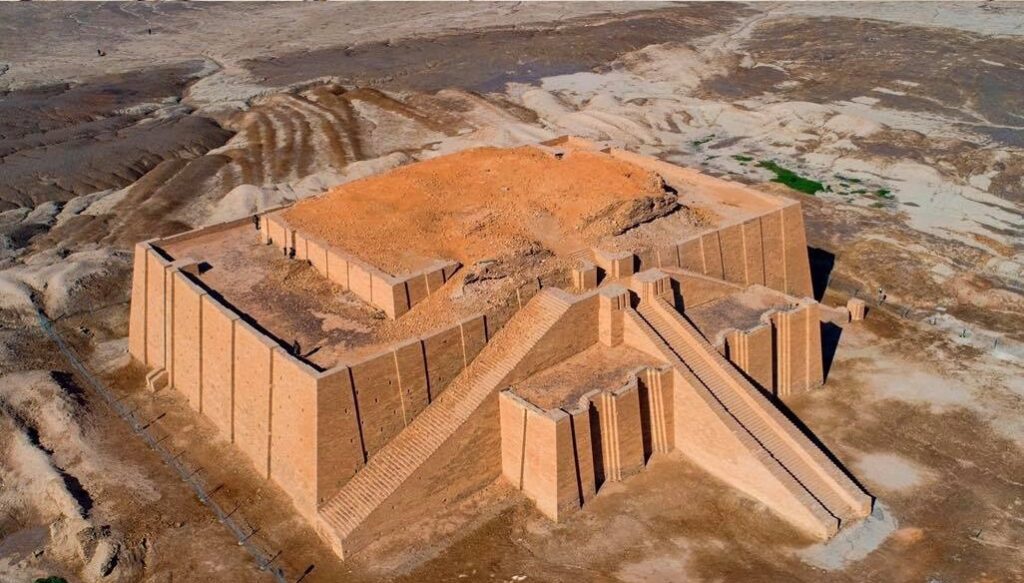
Before and after the excavation and restoration of the Ziggurat of Ur, a remarkable testament to the grandeur of the ancient world, stands proudly as one of Iraq’s oldest surviving temples. Constructed around 4000 years ago by King Ur-Nammu of the Neo-Sumerian Empire, this awe-inspiring structure has withstood the test of time, offering us a glimpse into the rich history and religious practices of the past.
Situated approximately an hour’s drive from the center of Nasiriyah, the Ziggurat of Ur stands as a testament to the advanced architectural achievements of the ancient Sumerians. It serves as a tangible reminder of the diverse religious beliefs and practices that thrived around 2050 BC, during the reign of King Ur-Nammu.

The initial discovery of the ziggurat’s remains dates back to 1850, when its imposing presence emerged from the sands of time. However, it was not until the 1920s and 1930s that a comprehensive excavation of the site took place, revealing the true magnificence of this ancient structure. The meticulous restoration efforts that followed allowed visitors to experience the grandeur and spiritual significance that the ziggurat once held.
Tragically, the Ziggurat of Ur suffered damage during the 1991 Gulf War. The onslaught of small arms fire and the vibrations caused by nearby explosions marred its ancient splendor. However, despite the scars of conflict, the enduring spirit of this architectural marvel perseveres.
Ongoing excavations in the vicinity of the ziggurat continue to unveil new antiquities and provide further insights into the lives of those who once worshipped within its sacred walls. Each new discovery brings us closer to understanding the rituals and beliefs of a civilization long past.
The Ziggurat of Ur stands as a symbol of human ingenuity and devotion, a monument that has stood the test of time for thousands of years. Its towering presence evokes a sense of wonder and reverence, transporting us to an era when gods and mortals converged within its hallowed halls.
As we explore the reconstructed ziggurat today, we cannot help but marvel at the vision and skill of the ancient architects who engineered such an awe-inspiring structure. The layers of history embedded in its weathered bricks and intricately carved staircases invite us to contemplate the passage of time and the enduring legacy of ancient civilizations.

Visiting the Ziggurat of Ur is an opportunity to connect with a distant past, to witness the remnants of a bygone era, and to appreciate the significance of this sacred site. It stands as a bridge between the ancient world and the present, reminding us of the complexities and mysteries that lie within the annals of human history.
As archaeologists and researchers continue their excavations, we eagerly await new revelations and discoveries that will further enrich our understanding of this remarkable structure and the civilization that created it.
The Ziggurat of Ur beckons us to embark on a journey through time, to marvel at the accomplishments of our ancestors, and to honor the legacy they left behind. Let us embrace the opportunity to explore and appreciate this ancient wonder, ensuring that its story continues to inspire generations to come.

Leave a Reply